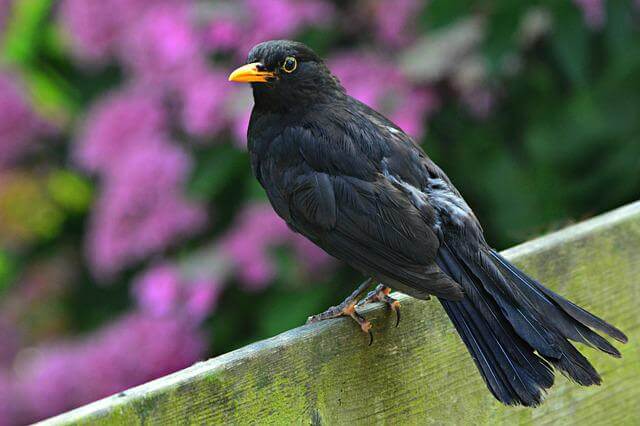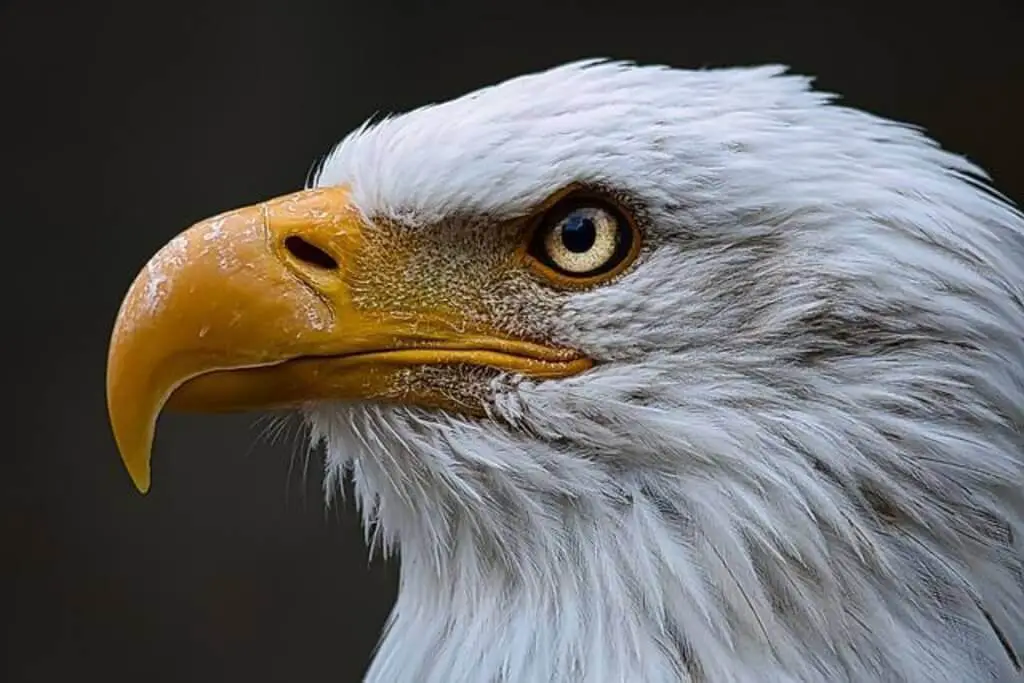Can birds move their eyes? Join us in this exploration as we delve into this intriguing question. While many animals can shift the direction of their gaze using eye muscles, we’ll uncover the unique mechanisms that birds employ to navigate their visual world. Prepare to be surprised by the answer!
Table of Contents
- 1 Key Takeaways
- 2 Can birds move their eyes?
- 3 What bird can’t move their eyeballs?
- 4 Why do birds have eyes on either side of their head?
- 5 Bird eyesight compared to humans
- 6 Most of the birds can move their eyes, true or false?
- 7 Can birds of prey move their eyes?
- 8 Why can’t birds move their eyes?
- 9 Can birds rotate their eyes?
- 10 Can a bird’s eyes move independently?
- 11 What colors can birds not see?
- 12 Can birds see the color blue?
- 13 Can birds see white?
- 14 Which bird has the longest eyesight?
- 15 Why do owls have 3 eyelids?
- 16 Do birds see out of both eyes?
- 17 Can seagulls move their eyes?
- 18 Do crows have one eye?
- 19 Do Flamingos blink?
- 20 Author
Key Takeaways
- Birds have limited eye movement within their sockets.
- Most birds have fixed eye sizes, while some owls have large, forward-facing eyes.
- To compensate for limited eye mobility, birds have specialized adaptations, like flexible necks.
- These adaptations enable birds to observe their surroundings effectively and locate prey.
- Understanding bird vision enhances our appreciation of their unique abilities and behaviors.

Can birds move their eyes?
Birds cannot move their eyes the way we can. The most a bird can do is rotate its eyes in their sockets a few degrees. For the most part, birds must move their heads to see what is around them. This is why birds are often seen turning their heads to get a better look at something.
Only a few birds, such as loons, cormorants, some cockatoos, and parrots, are capable of only very small movements in their eyes. This helps them stay aware of what is happening around them while they are focused on something else.
What bird can’t move their eyeballs?
While a few birds can move their eyes in all directions, there are many that cannot. Owls are one of these species.
This is because they have a sclerotic ring, a band of cartilage that surrounds the eye and prevents it from moving. This adaptation helps owls focus on their prey in the dark without being disturbed by light.
Why do birds have eyes on either side of their head?
Birds have eyes on either side of their head because it gives them a 300 degree field of vision. This way they can see what is going on around them no matter where they are looking.
It also helps them to better detect predators and prey. Having eyes on the side of their head allows birds to see in all directions at the same time, which is an advantage when they are foraging or flying.
Bird eyesight compared to humans
In order to see, humans and birds both rely on light. However, there are some distinct differences in the way that these two creatures process visual information.
Birds have eyes that are positioned on the sides of their heads, which gives them a nearly 360 degree view of their surroundings. This allows them to see potential predators or prey even when they are not facing directly towards them.
In addition, birds have a higher density of cones in their eyes than humans do, which means that they can see more colors and finer details. Birds also have a well-developed area in the brain called the optic tectum, which is responsible for processing visual information.
This area is larger in birds than it is in humans, and it helps birds to quickly identify movement and distinguish between different objects. Overall, bird vision is much better than human vision.
Most of the birds can move their eyes, true or false?
False, the majority of birds have fixed eyes and cannot move them around in their sockets like humans can. The movement of a bird’s eyes is limited to up and down, as well as side-to-side. This is due to the placement of their eyes on the sides of their head.
Can birds of prey move their eyes?
Birds of prey, such as eagles and hawks, have excellent vision. They are able to see their prey from great distances and swoop down to capture it. However, they are not able to move their eyes around like we can.
The range of motion for their eyes is very minimal, only about a few degrees. This means that they can’t look up or down or side to side very easily. Instead, they must turn their entire heads to see in different directions.

Why can’t birds move their eyes?
Birds can’t move their eyes because they are confined within the eye’s socket. The socket is a boney structure that surrounds and protects the eye.
The muscles that control eye movement are attached to the skull, so birds can’t move their eyes up, down, left, or right. Instead, they have to rotate their entire head to look in different directions.
Can birds rotate their eyes?
Birds cannot rotate their eyes. The reason for this is that the socket that the eye is fixed in does not allow for much movement.
This means that birds have to turn their entire head in order to see in different directions. This is why you will often see birds bobbing their heads up and down as they search for food on the ground.
Can a bird’s eyes move independently?
Yes, birds’ eyes can move independently. In fact, their eyes are specially adapted to allow them to see in opposite directions, which gives them a 360-degree view of their surroundings.
This allows them to quickly spot predators or prey, even when they are moving around. Birds also have a high degree of visual acuity, which means that they can see very fine details. This helps them find food and identify potential threats from a distance.
What colors can birds not see?
Birds don’t see the same colors as we do. In fact, they can see colors that are invisible to us! This is because birds have four types of cone cell in the eye, while humans only have three.
This gives them a tetrachromatic vision, meaning they can see four types of color. The extra color allows birds to see ultraviolet light, which is invisible to us. This means that for many birds, the world is full of colors that we can’t even imagine!
Can birds see the color blue?
Birds can see the color blue. While they don’t see it as vividly as humans do, they can still distinguish the difference between blues and other colors.
This is because birds have four types of cone cells in their eyes, while humans only have three. The fourth type of cone cell in birds’ eyes allows them to see a wider range of colors, including blue.
Can birds see white?
Birds are able to see a variety of colors, including white, due to their well-developed eyesight. Certain bird species, such as the Snowy Owl, rely heavily on their ability to see white in order to hunt prey.
These birds are able to find small prey items like rodents in the snow because they can distinguish them from the background. In addition, many bird species are able to visually detect predators from a distance and avoid being attacked.
Which bird has the longest eyesight?
The eagle is known for its keen eyesight, which helps it spot prey from a great height. But which bird has the longest eyesight?
Studies have shown that some birds, such as the Peregrine Falcon, can see up to eight times further than humans. This is because their eyes are specially adapted to see in extreme conditions, such as low light levels and high altitudes.
Other birds with exceptional eyesight include the barn owl, which can see in complete darkness, and the American kestrel, which can spot prey from over a mile away. So if you’re ever out birdwatching, be sure to keep an eye out for these super-sighted species!
Why do owls have 3 eyelids?
The Owl is a bird that is known for its big eyes and distinctive face. Owls have three eyelids: one lid for the top of the eye, one for the bottom, and a nictitating membrane that moves horizontally across the eye, to help keep the eye clean and moist.
The owl’s third eyelid helps to protect the owl’s eyes from dirt, dust, and other debris. The nictitating membrane also helps to keep the owl’s eyes moist, which is important since owls spend a lot of time hunting in darkness.

Do birds see out of both eyes?
Birds have binocular vision, which means they can see out of both eyes at the same time. This gives them a three-dimensional view of their surroundings and allows them to accurately judge distance. Birds can also rotate their heads around 300 degrees, allowing them to see in all directions.
Can seagulls move their eyes?
Many people know that seagulls have excellent vision. What some people may not know is that they are one of the few birds whose eyes can move in their sockets.
This gives them the ability to see in all directions, even below them. This allows them to be aware of potential predators or prey, no matter where they are.
Do crows have one eye?
While crows may appear to have only one functioning eye, this is not the case. Crows actually have both eyes fully functional, but they use only one eye at a time because their monocular vision is so effective.
In fact, crows can see up to 3x better with their one good eye than we can with two! This allows crows to effectively judge depth and distance while hunting or scavenging for food.
Do Flamingos blink?
Flamingos have very strange eyes. For one, they do not blink. Their eyes are also protected by a third eyelid, the nictitating membrane.
This membrane is a thin piece of skin that runs across the eye and helps to keep the eyes moist and clean, and also acts as a barrier against debris and insects.



